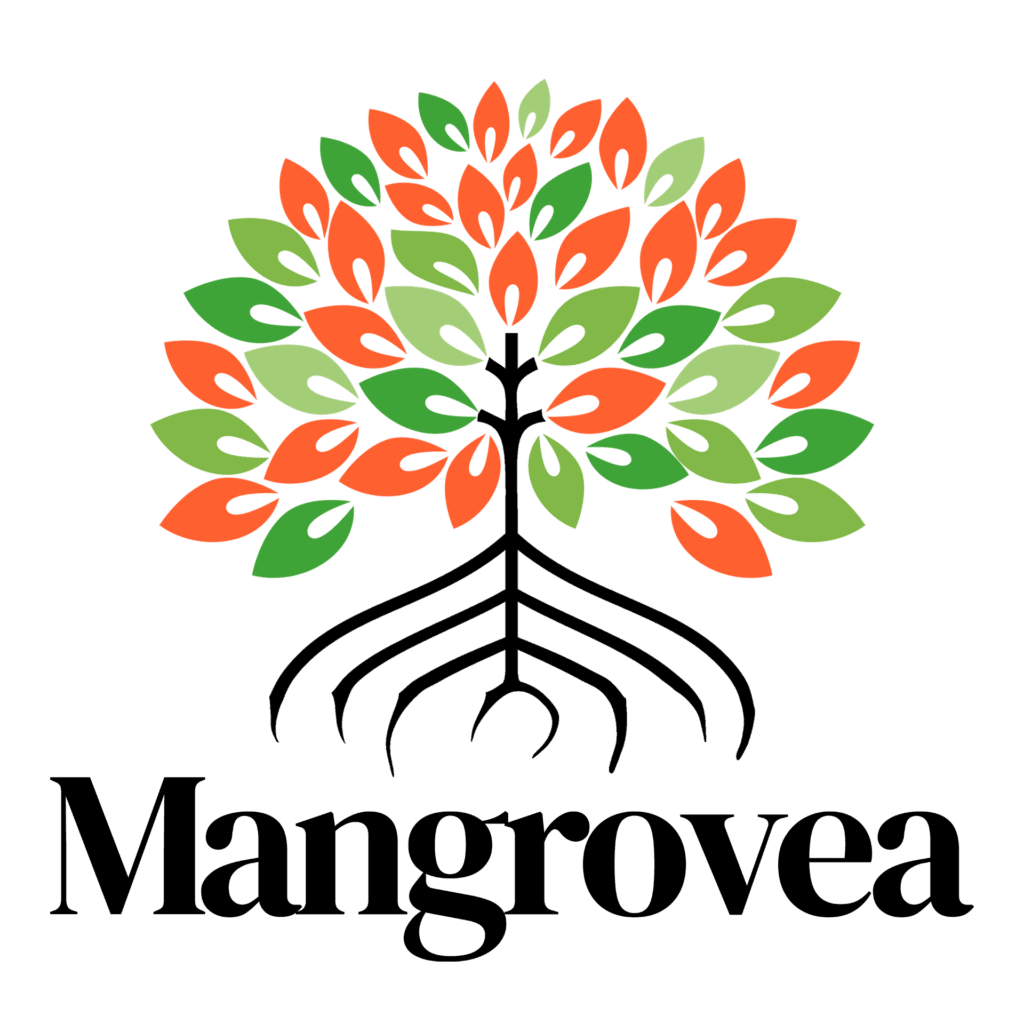Congratulations, you've captured the attention of visitors to your website, turned them into leads via tools like forms and content offers, and then integrated them into your database. However, to turn those leads into customers, simply collecting contacts isn't enough. In fact, it is, according to Hubspot 90 % of them, or even more, will need to mature before making a purchase. So how do you manage the flow of people who are still undecided? The solution is to "nurture" them. How: Thanks to lead nurturing.
This guide offers an exploration of the principles of lead nurturing, advanced tactics to improve your campaigns, and concrete illustrations to enrich your strategy.
Ready to learn how to nurture your prospects with lead nurturing? Let's get started!

The fundamentals of lead nurturing
What is lead nurturing?
Lead nurturing is an inbound marketing strategy designed to build a relationship of trust with your undecided prospects. By providing them with content tailored and relevant to their profile and stage in the buying journey, you help them move towards a purchasing decision. This method not only boosts conversion rates, but also sales, while improving customer satisfaction and loyalty.

Some examples of lead nurturing scenarios
Welcome
When a prospect joins your mailing list, launch a series of welcome emails. These initial emails should introduce your company, explain the value you offer, and set expectations. This is an opportunity to start building a relationship by sharing your mission, case studies, testimonials, and highlighting how you can help the prospect solve their problems.
Educating, constantly adding value
Send a series of emails that educate the prospect on topics relevant to their interests or problems. Via a newsletter, for example. The aim is to establish your company as an authority in your field, helping prospects better understand their challenges and possible solutions.
Follow-up after a key interaction
If a prospect has visited a specific page on your website, participated in a webinar, or downloaded a guide, send a series of follow-up emails that delve deeper into the topic or interaction. For example, after a webinar, you could send a summary of key points, answer frequently asked questions, or offer a link to the recording for those who missed the live session.
Provide testimonials and case studies
Prospects want to see proof that your products or services work. Send emails that feature testimonials from satisfied customers or detailed case studies. Tailor these messages to the prospect's industry or the specific challenges they face, to show how your company can solve their problems.
Talk about your offers and services
While it's not the central pillar of your content, it's still important to keep prospects up to date with the evolution of your offers and services. This content can be accompanied by a CTA (call to action) designed to activate prospects. This could be an invitation to schedule a demo, sign up for a free trial, or participate in a free consultation. The CTA must be clear, convincing and personalized according to the commitment and interest shown by the prospect up to that point.
Distribution channels for your lead nurturing content
At this stage, you might think that lead nurturing can only be done by email.
No way!

While email is a powerful and central tool in many nurturing strategies, there are a multitude of other channels and tactics that companies can use to engage their prospects at different stages of their buying journey. Diversifying contact points strengthens the relationship with the prospect by offering a more complete and consistent experience. Here are some other lead nurturing channels and strategies:
Social networking
Social networks enable us to interact directly with prospects and share relevant content that can help them in their decision-making process. It's also an excellent platform for listening to prospects' needs and concerns, and responding to them in a personalized way.
Content Marketing
Content marketing isn't just about email. Creating quality content (blogs, ebooks, infographics, webinars, videos) on your website and elsewhere helps attract prospects to you and engage them with useful, relevant information.
Targeted advertising
Using targeted advertising to sponsor your organic content is a great way to increase its reach and frequency of exposure to your prospects.
- On Linkedin Ads, for example, you can add the list of your prospects as a target audience and sponsor your educational, informational, relational content, etc., to stay within the scope of your prospects and provide them with ongoing value.
Events and webinars
Hosting events, whether in person or virtual (such as webinars), can be a great way to engage prospects, deliver value and build deeper relationships.
Phone calls
Direct contact by telephone can be very effective, especially for warm leads that have shown significant interest. These methods enable more personal and direct communication.
Why is lead nurturing essential to your marketing strategy?
Lead nurturing is crucial to your inbound marketing strategy for :
- Maintaining a continuous link with leadsWe're talking here about potentially +90% of your leads...
- Convert more leads into customers by accompanying them throughout their purchasing journey, where the provision of key educational content often marks an acceleration in their purchasing decision;
- Reduce your sales cycle time by effectively preparing prospects with the right content, enabling sales teams to save precious time; this is a KPI to monitor, as it has a direct impact on the level of productivity and therefore profitability of your sales teams.
- Improving customer relations by better understanding their expectations and offering a personalized, relevant experience.
How do I do lead nurturing?
Summary of key steps in the lead nurturing process
The lead nurturing process typically includes these key steps:
1. Identify prospects.
The first step is to identify prospects, often through registration forms, content downloads (ebooks, webinars, etc.), interaction or lead magnets on social networks. This is when you start collecting essential data about your prospects.
2. Prospect segmentation
Once identified, prospects need to be segmented according to various criteria such as their interests, behaviors, demographics, or stage in the sales funnel. This segmentation makes it possible to personalize communications and offers to best meet their needs.
For example: A prospect who has downloaded TOFU (Top of the funnel) content will not be exposed to the same nurturing content as a more intentional, educated prospect who has downloaded BOFU (Bottom of the funnel) content. Segmentation is therefore essential.

3. Targeted content development
Create content tailored to each prospect segment. This content can range from initial educational information to more specific product demonstrations, depending on where the prospect is in their buying journey.

Here are some ideas for content adapted to the prospect's level of maturity:

4. Choice of communication channels
Decide on the best channels to reach your prospects (email, social networks, phone calls, etc.). The choice depends on your prospects' preference and the channel's effectiveness in conveying the chosen type of message.
Generally speaking, the most effective approach is to be present on different B2B channels:
- On average, 233 days pass between the first touch and the sale.
- This requires 31 keys on at least 3 channels.
The channels I recommend in particular :
- Emailing Indispensable: 40 % of B2B deals involve interaction with email marketing during the customer journey.
- LinkedIn Ads : Remarketing, i.e. offering your content to people who are already your prospects.
- Blogging : For the "evergreen" aspect of the content, natural referencing and the possibility of declining the content into videos, shorts, posts, etc...
5. Triggering nurturing campaigns
Trigger your nurturing scenarios based on user actions, such as opening an email, downloading a guide, or visiting a specific product page on your website.
6. Follow-up and commitment
Track prospects' interactions with your campaigns and further engage them based on their response. This can include sending additional content, offering free consultations, or scheduling product demos.
7. Lead qualification
Use lead scoring to assess a prospect's readiness to buy. Scoring can be based on their engagement with your content, their behavior on your site, or demographic data.
8. Transfer qualified leads to sales
Once a prospect is considered qualified (or "hot"), transfer him or her to your sales team for personalized follow-up. At this stage, the prospect is sufficiently informed and engaged to start a sales conversation.
9. Measurement and optimization
Analyze the performance of your nurturing campaigns by examining key indicators such as conversion rates, engagement, and return on investment (ROI). Use this data to optimize your future campaigns.
The essential tools for a lead nurturing strategy
Several tools are essential for a successful lead nurturing strategy:
- A content creation toolThis is the key to generating quality content targeted to your audience and objectives, such as blog articles, e-books, webinars, and videos;
- A lead capture toolThis is essential for collecting contact information from prospects via forms, landing pages, pop-ups, etc. ;
- A lead management toolYou need to store, segment and qualify your prospects, whether using a CRM or a marketing automation platform;
- A content delivery toolThis allows you to distribute personalized content to your prospects via e-mail, SMS, push notifications, social networks, etc. ;
- A tool for measuring results, for tracking and analyzing the effectiveness of your lead nurturing campaigns through dashboards, reports and statistics.
Let's take a closer look at advanced lead nurturing techniques
Initially, set up your lead nurturing scenarios simply. But when the volume of leads justifies it, it will be useful to use these advanced techniques to perfect your nurturing: reaching the right person, with the right message, at the right time.
Using lead scoring
Lead scoring is a strategy that involves allocating points to each lead according to its profile and activity. The aim is to assess the lead's interest and degree of readiness, in order to determine the most opportune moment to present it to the sales team.
With lead scoring, you can better target your lead nurturing efforts, concentrating on the most promising leads who are closest to becoming customers.
To help you draw up your lead scoring table, I've prepared a document listing the various criteria on which you can base your score.
Personalize content
The key to success in lead nurturing lies in personalization, which increases lead engagement and trust. It's not just a matter of inserting the lead's first name into your emails, but also of providing content specifically tailored to their needs, interests, field of activity, and company size, among others.
Personalizing your communications helps to establish a more personal and authentic bond with your leads, making them feel valued and unique.
Use multi-channel
Lead nurturing isn't just confined to email. You can and should exploit other channels of communication with your leads, including social networks, SMS, chatbots, and phone calls.
The advantage of multi-channel marketing is that it multiplies contact points while respecting the communication preferences of your leads. This allows you to meet your leads where they are, reinforcing your visibility and presence in their daily lives.
Concrete examples and case studies
Discover some of the most successful lead nurturing cases from a variety of sectors. These examples will provide you with inspiration and best practices applicable to your situation.
Example 1: Lead nurturing in the B2B industry - Targeted email campaign
HubSpot, a company specializing in marketing, sales and customer service solutions, is a prime example of lead nurturing in the B2B sector. By sending personalized emails based on the profile, behavior and maturity level of its prospects, HubSpot is able to effectively guide them through the buying process. This approach includes sending a welcome email following newsletter sign-up, followed by tailored educational content. Using lead scoring to identify the most promising prospects, HubSpot boosted its conversion rate by 50 % and shortened its sales cycle by 33 %.
Example 2: Successful use of social networks for B2C lead nurturing
L'Oréal, a renowned cosmetics brand, takes advantage of social networks to build and maintain relationships with its consumers. By regularly publishing attractive and engaging content (tutorials, tips, testimonials), the brand actively interacts with its fans, answering their questions and inviting them to take part in special events. Thanks to targeted data collection on social networks, L'Oréal personalizes its offers and communicates effectively, contributing to customer loyalty, increased brand awareness, increased traffic to its website and higher sales.
Example 3: Scenario for reactivating inactive leads
Netflix, the video streaming giant, excels at reactivating inactive leads by sending personalized e-mails to former subscribers, encouraging them to renew their subscription. Reminding users of the benefits of its service, offering special deals and suggesting content of interest, Netflix effectively targets the leads most likely to re-subscribe. This method has reduced churn and increased sales.
Example 4: A company using marketing automation for lead nurturing
Salesforce, a leader in CRM, uses marketing automation to optimize its lead nurturing campaigns. By adapting its emails to the specific needs and interests of its prospects according to their sector, company size, and stage in the buying journey, Salesforce succeeds in personalizing its approach. In addition, the company continually analyzes and optimizes its campaigns based on key performance indicators. Thanks to this strategy, Salesforce has improved the quality of its leads, increased its conversion rate, reduced the cost of acquisition, and raised the level of customer satisfaction.
Learning from examples: What success stories teach us
The following examples show effective strategies for optimizing your lead nurturing:
- Segment your prospect base according to their specific needs and interests;
- Develop high-quality content, adapted and targeted to each phase of the buying cycle;
- Personalize your communications according to the profile and behavior of each prospect;
- Use a variety of communication channels, such as email, social networks and SMS;
- Apply lead scoring to detect the most promising prospects who are ready to buy;
- Adopt marketing automation to automate processes and maximize the effectiveness of your lead nurturing campaigns;
- Analyze the performance of your lead nurturing campaigns, measure results and gradually refine your strategies.
Conclusion
Lead nurturing is crucial to building and maintaining a solid relationship with your prospects, turning them into devoted customers. For your lead nurturing strategy to bear fruit, here are the steps you need to take:
- Segment your prospect base by taking into account their characteristics, needs and interests;
- Develop quality content that is relevant and aligned with each phase of the buying journey;
- Personalize your communications according to each prospect's profile and actions;
- Diversify the communication channels used, including e-mail, social networks, SMS, among others;
- Implement lead scoring to identify the most engaged prospects most likely to make a purchase;
- Adopt marketing automation to automate and optimize your lead nurturing actions;
- Evaluate and analyze the performance of your lead nurturing campaigns to continually fine-tune them.
By applying these recommendations, you'll boost your conversion rate, sales, customer loyalty and satisfaction. Don't wait any longer, invest in lead nurturing now!




